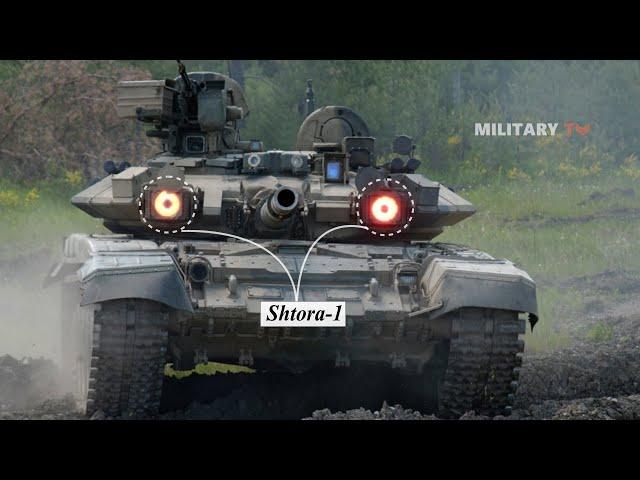The Evolving Role of T-90 tanks in the Ukraine Conflict
The ongoing war in Ukraine has transformed the battlefield into a rigorous test for russian military equipment, especially its renowned tank fleet. Despite their ancient reputation, recent reports reveal an alarming rate of losses that challenge the effectiveness of these armored vehicles in contemporary combat scenarios. As Ukrainian forces continue to refine their strategies against armored units, attention is now directed towards russia’s latest tank model—the T-90 series. With its enhanced armor and cutting-edge technology, can the T-90 help reverse Russia’s mounting losses and strengthen its ground operations? This article delves into the current status of Russian tank deployments in Ukraine and assesses whether the T-90s can indeed turn the tide on the front lines.
Evaluating the Effectiveness of T-90 Tanks in combat
The introduction of T-90 tanks into Ukraine signifies a crucial shift in Russia’s military approach. As Russian forces face considerable equipment attrition, these advanced tanks are designed to enhance their armored capabilities. Notable features of the T-90 include improved firepower, reinforced armor protection, and complex targeting systems. These attributes may provide a vital advantage against Ukrainian anti-tank tactics that have been particularly effective against older models like the T-72. Still,one critical question persists: will these enhancements be sufficient to reduce current losses among Russian armored vehicles?
While promising on paper,experts caution that how well these tanks perform under actual combat conditions will depend substantially on operational strategies and unit cohesion. Key considerations include:
- Crew Training: The successful deployment of T-90s hinges on how well operators are trained.
- Logistical Support: Ongoing maintenance and supply chains are essential for keeping these tanks battle-ready.
- Tactical Adaptation: The ability of Ukrainian forces to adjust their countermeasures could diminish any advantages offered by new technologies.
Although equipped with advanced features, it remains uncertain whether the introduction of T-90s will effectively curb tank losses as hostilities continue.
Tactical Challenges and Strategic Opportunities with T-90 Deployment
The challenges faced by Russia’s armored divisions amid ongoing conflict highlight both opportunities for enhancement through new technologies like those found in modernized T-90 tanks. These vehicles come outfitted with state-of-the-art fire control systems and reactive armor designed to enhance both survivability and offensive capabilities. However, realizing their full potential requires adapting tactics suitable for fast-paced asymmetric warfare prevalent within this conflict zone. Furthermore, ensuring personnel receive adequate training is vital for leveraging technological advancements effectively.
Main factors influencing successful deployment include:
- Sustained Logistics: Robust supply chains must be established to maintain operational readiness amidst hostile conditions.
- Tactical Coordination: Effective collaboration between tank units with infantry support is necessary for maximizing combat efficiency.
- Drones & Intelligence Gathering: Utilizing drone surveillance alongside intelligence-gathering resources can inform tactical decisions regarding movements and engagements.
The optimistic outlook surrounding technological innovations must be tempered by existing tactical hurdles; precision-guided munitions coupled with coordinated enemy maneuvers pose important threats even to advanced models like the T-90s. Reports indicate vulnerabilities such as susceptibility to anti-tank weaponry remain pressing concerns requiring immediate attention from military strategists.
To address such challenges effectively while enhancing survivability rates among troops deployed with these assets may necessitate further innovation—developing countermeasures tailored specifically toward identified weaknesses.
The table below summarizes some vulnerabilities along with potential counterstrategies:
| Vulnerability | Potential Countermeasures |
|---|---|
| Risk from Anti-Tank Missiles | Implement active protection systems (APS). |
Strategic Recommendations for Improving Russian Armored Capabilities
A extensive strategy is essential if Russia aims at enhancing its armored units’ effectiveness within modern warfare contexts.Firstly,an integrated command-and-control framework would facilitate real-time data sharing across various military branches including infantry support teams or aerial reconnaissance units—optimizing situational awareness while improving response times during engagements.Furthermore,a focus should also lie upontactical adaptability combined alongside rapid mobility;This could involve deploying lighter armaments alongside traditional heavy-duty tanks enabling swifter operations particularly suited towards urban environments where conventional heavy machinery struggles significantly due terrain constraints.Effective training emphasizing innovative approaches remains crucial too when developing responsive forces capable adapting quickly changing circumstances encountered throughout conflicts.
Moreover,investments aimed at advancing protective armor technology and integratinganti-drone measures would mitigate risks posed by contemporary anti-tank weaponry.Additionally,enriching electronic warfare capabilities would disrupt adversarial communications thereby providing substantial advantages during confrontations.Establishing partnerships involvingboth domestic international tech firms would further bolster innovation efforts concerning design improvements weapon systems ensuring continued competitiveness amidst evolving battlefields scenarios.
Final Thoughts on Russia’s Armored Future Amidst Ongoing Conflict
The protracted conflict unfolding within Ukraine has unveiled significant weaknesses inherent within traditional Russian military assets—particularly aging fleets once considered formidable contenders across battleground landscapes.as Ukrainian forces persistently leverage innovative tactics coupled advanced armaments questions arise regarding efficacy surrounding newly introduced models such as those found amongst latest iterations namely:T– 9 0 . While boasting notable specifications along defensive mechanisms success ultimately hinges upon adaptability exhibited throughout rapidly shifting dynamics associated modern-day warfare environments.analysts suggest unless strategic adjustments occur swiftly enhancing overall performance levels achieved via newer platforms trends indicating persistent high casualty rates may likely endure moving forward.As developments unfold globally observers remain vigilant recognizing outcomes stemming from this clash between armored divisions could yield profound implications shaping future security paradigms worldwide.




